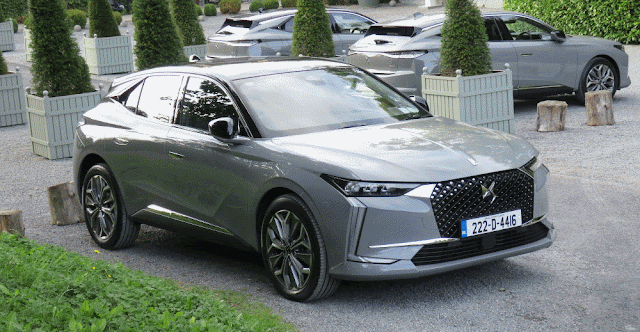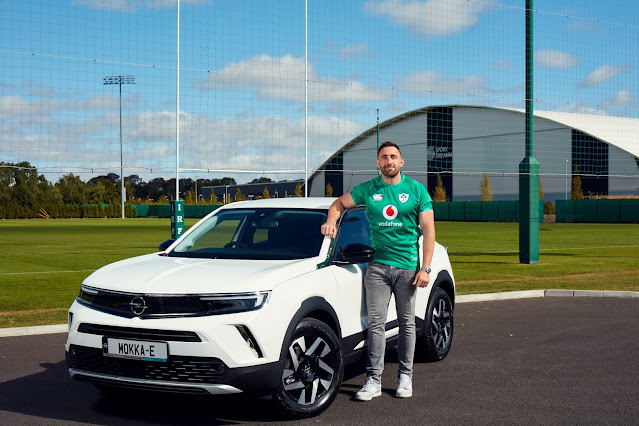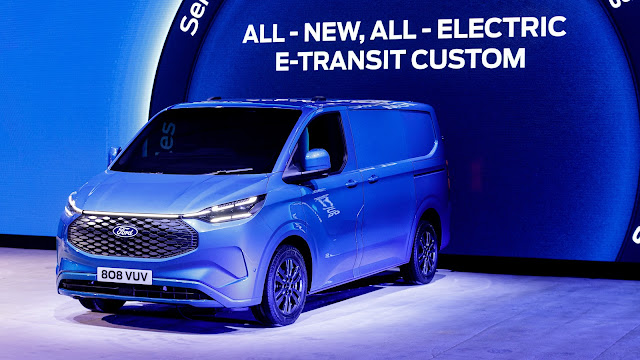I finished a recent review of the current DS 7 by saying ‘not there yet’ in terms of being the premium luxury car that DS Automobiles aspires to, writes Brian Byrne. The upcoming DS 9 flagship saloon may well be the one that brings the French brand over the line. In the meantime, though, they're pushing to or maybe even through that boundary with their latest compact car, the new DS 4.
With 14 passenger car brands under its umbrella, from Alfa Romeo to Opel-Vauxhall and including Chrysler and Maserati, the Stellantis Group is now one of the world’s major automotive players. Combining resources is going to be a key part of its viability and with that comes also a need to be skilful at differentiating between models sharing common platforms and powertrains.
The new DS 4 is an example. In core platform, it is equivalent to the Opel Astra, Peugeot 308 and Citroen C4. Four models with the same DNA which have to appeal to different customers in the very competitive compact hatch segment. Given that all will have available the same engines and other technology, it is style preference that’s going to bring to each its targeted customer. Plus the customer experience, a relatively new touchstone for the car trade over a decade or so.
The Opel Astra has a sharp-edged styling with a tilt towards historic Opel models detailing, and there’s a distinct market group out there for this. The Peugeot 308 sheetmetal is softer, geared to the steady middle family buyer of which there is a particularly strong cohort in the French homeland. Citroen’s C4 appeals to those who have always valued that brand’s quirkiness and tradition of comfort. And the DS 4 is aimed at those in the segment who want to feel they are rather more special, who aspire towards something more than the ordinary in everything they acquire. Especially more ordinary that is visible or tangible.
So the DS 4, which I drove over a couple of days very recently, is offering a relative design luxury compared to its related cousins. It is distinction like an expensive watch on the wrist, or a high-end sweater with a subtle but carefully-placed brand tag, or the undeniably luxury scent of a Chanel Grand Extrait.
The visibility of the DS 4 is certainly way beyond its in-house brand cousins. A front face of glittering presence with cut diamond-sharp edges, the very powerful DS logo framed in a constellation of reflections as the grille elements catch the light. The distinctiveness is continued along the profile with especially the roofline bringing the overall style to a very pleasing and uncluttered rear treatment that has the look of a good designer's concept sketch made real.
Inside, within the overall dimensions available as a compact hatchback, there is an upscaled sense of premium. A quality leather look amongst the textures. Etched switchgear to offer more diamond effect. But, unlike the DS 3 smaller sibling, the treatment of controls and instrumentation is coherent and unambiguous.
This is a first drive report, so I'll reserve more detail and commentary until after I've had a full review period with the DS 4. There are five grades, and the car comes with petrol, diesel and plug-in hybrid powertrains. There will be a full-electric version next year in a similar policy to that effected in the companion models from the other Stellantis brands.
I drove the 180hp petrol and the 225hp plug-in petrol hybrid, which latter had the added technology of a camera operated suspension system which looks at the oncoming road and adjusts shock absorber settings to provide an extra level of comfort. It does seem to work.
My overall experience over the couple of days was good. The DS 4 in both guises felt a special place to be. Even a premium place. But I'll wait a while to see if the 'are we there yet?' question on luxury gets an affirmative.
PRICE: From €37,295-€54,640. WHAT I LIKED: The feeling that DS is at least almost there.





























.jpg)


.jpg)

